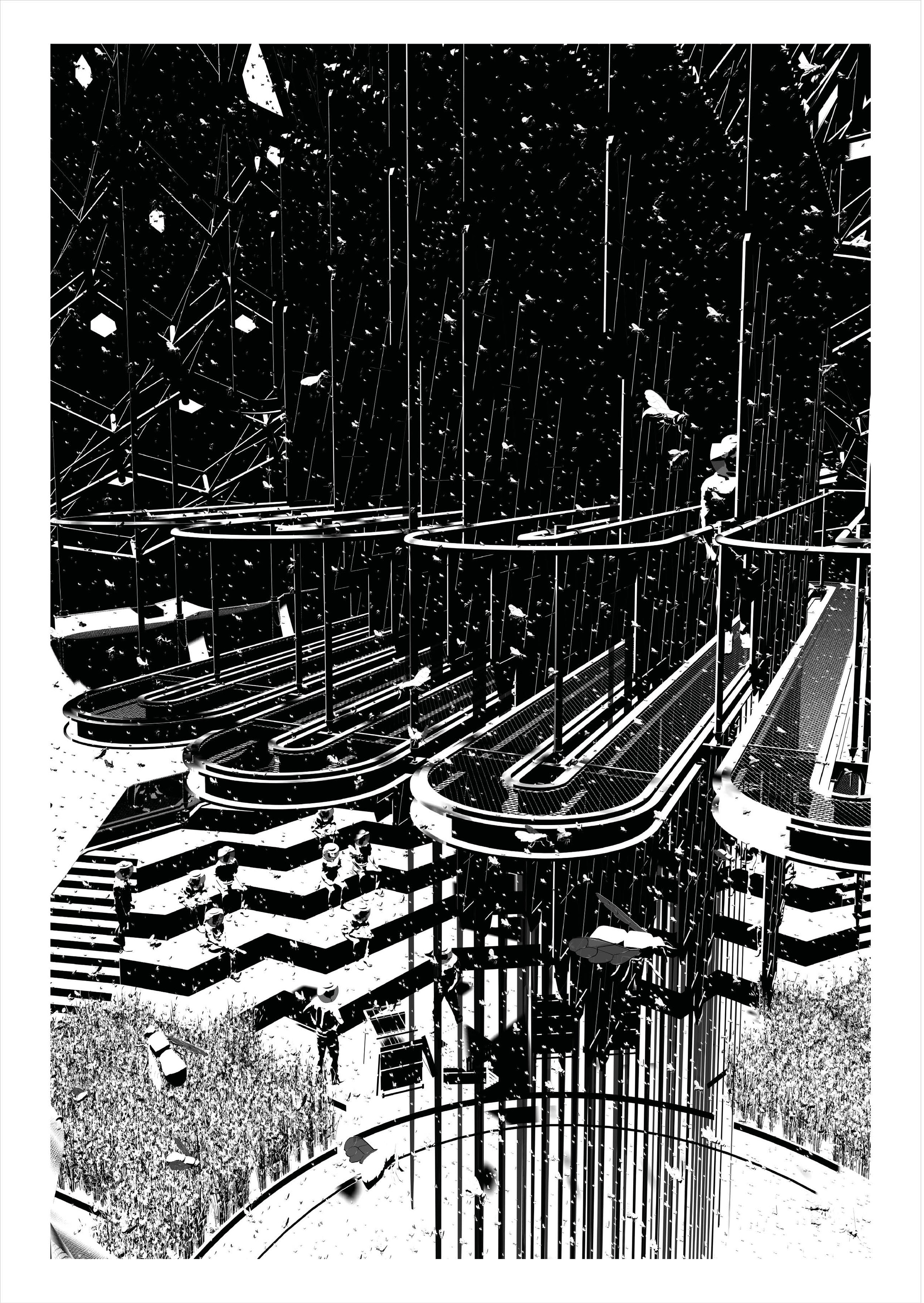
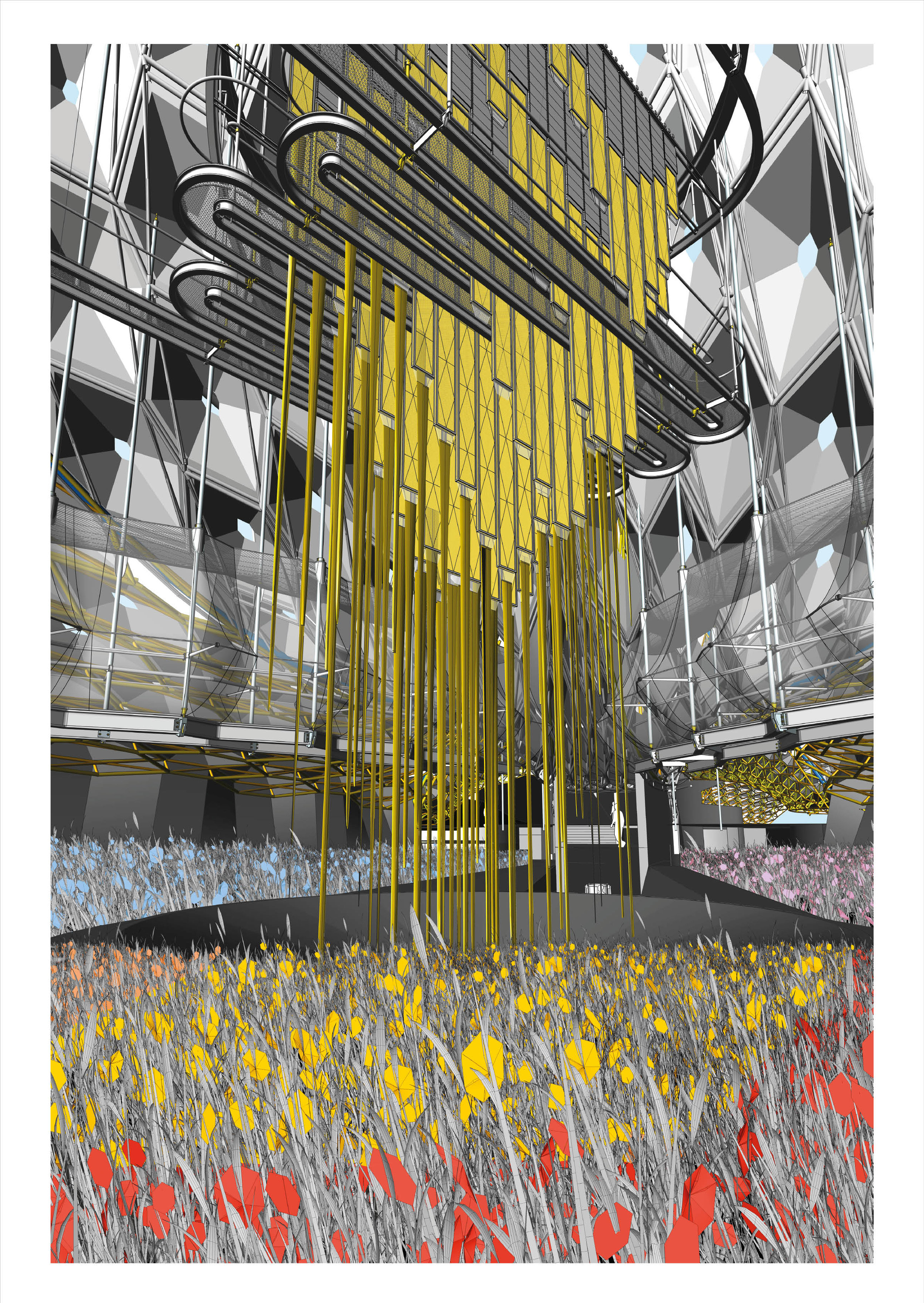
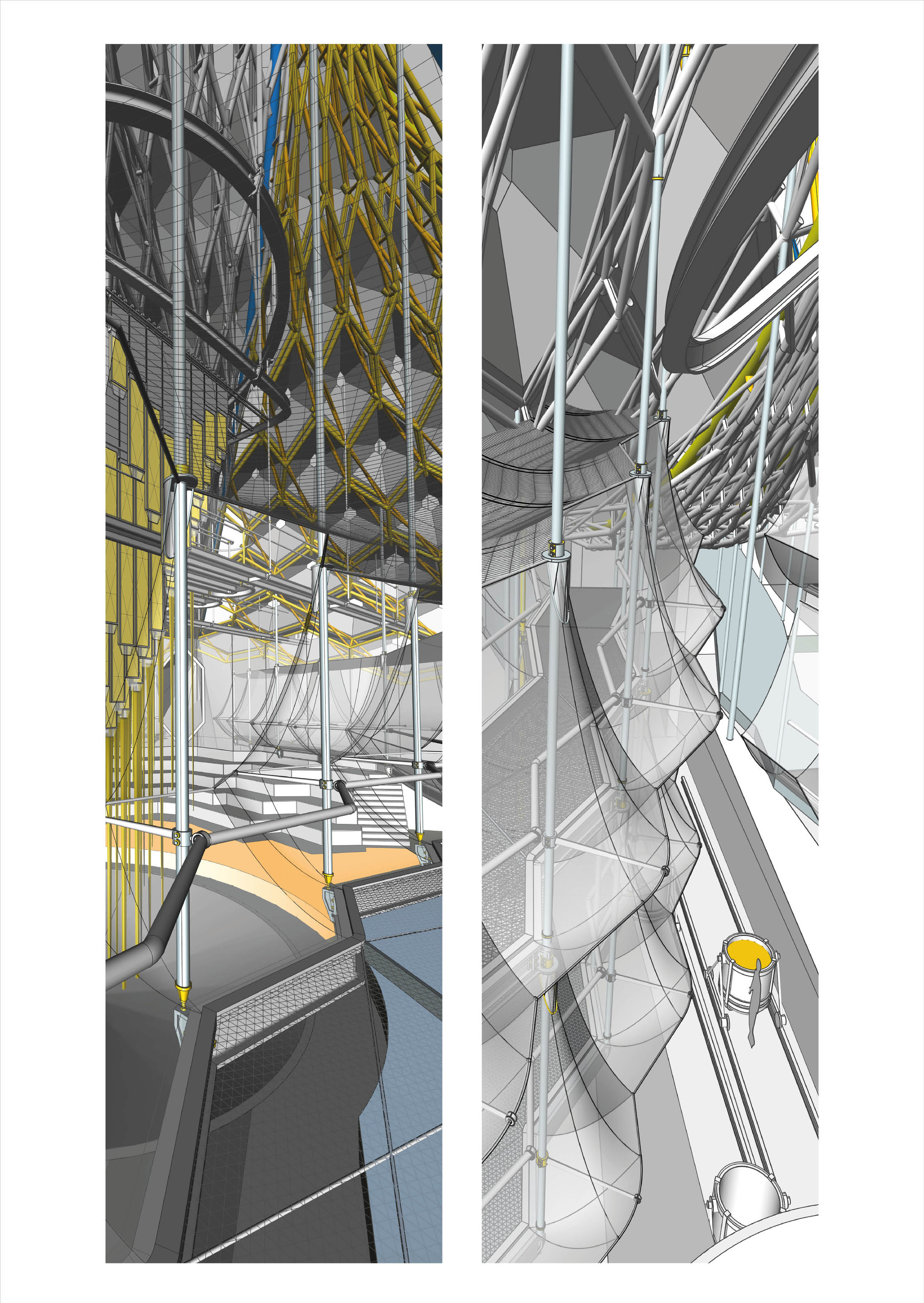

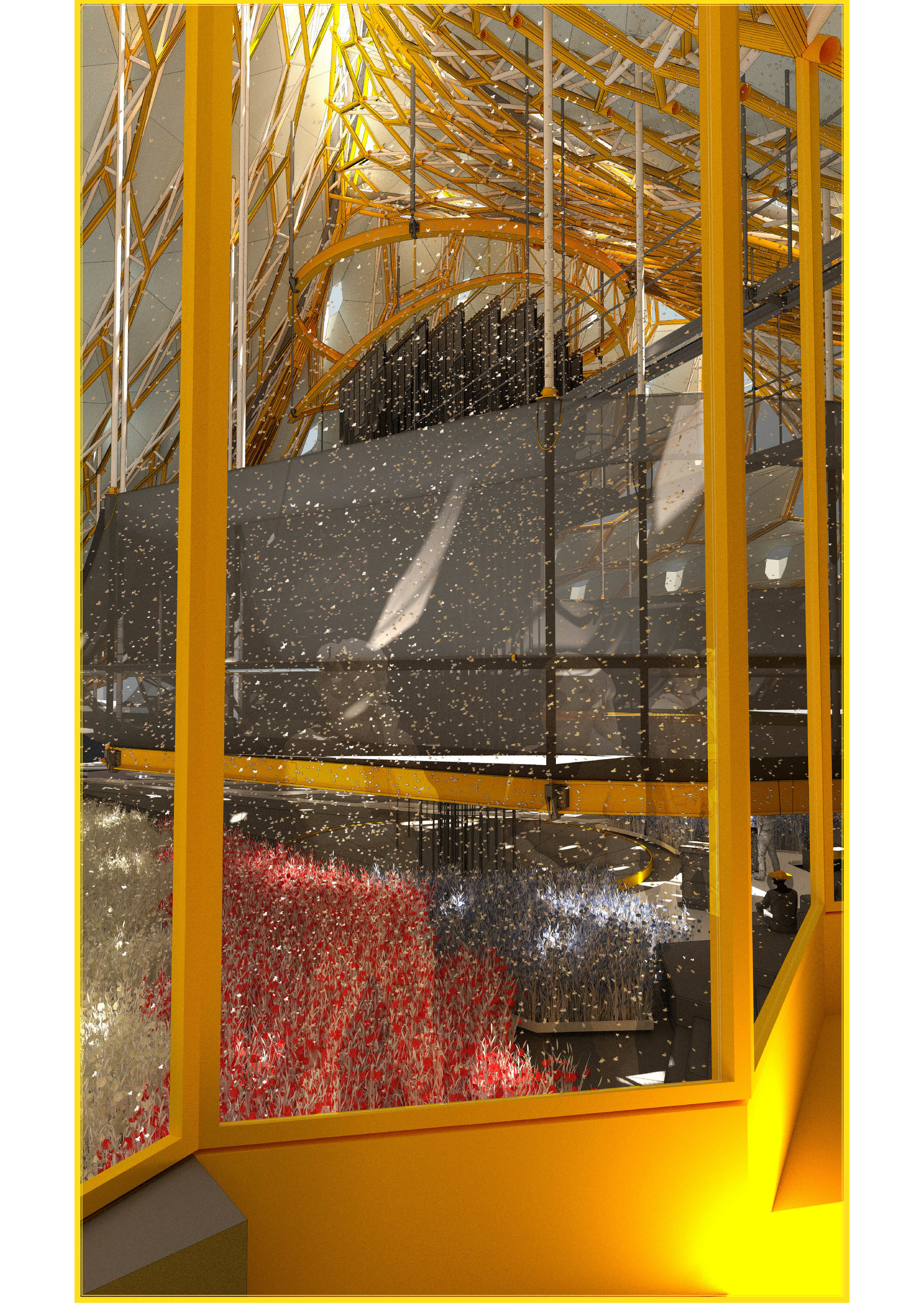
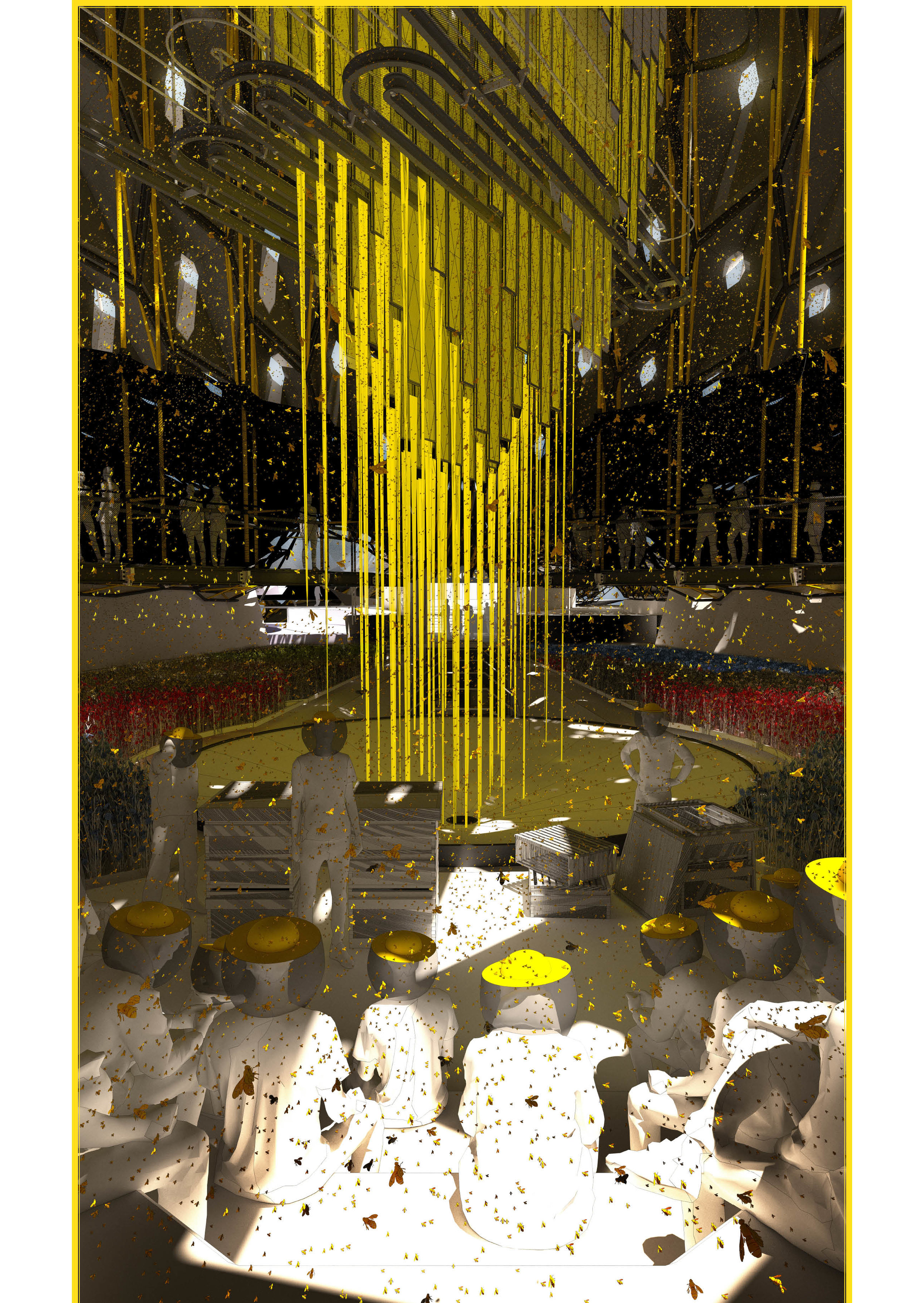
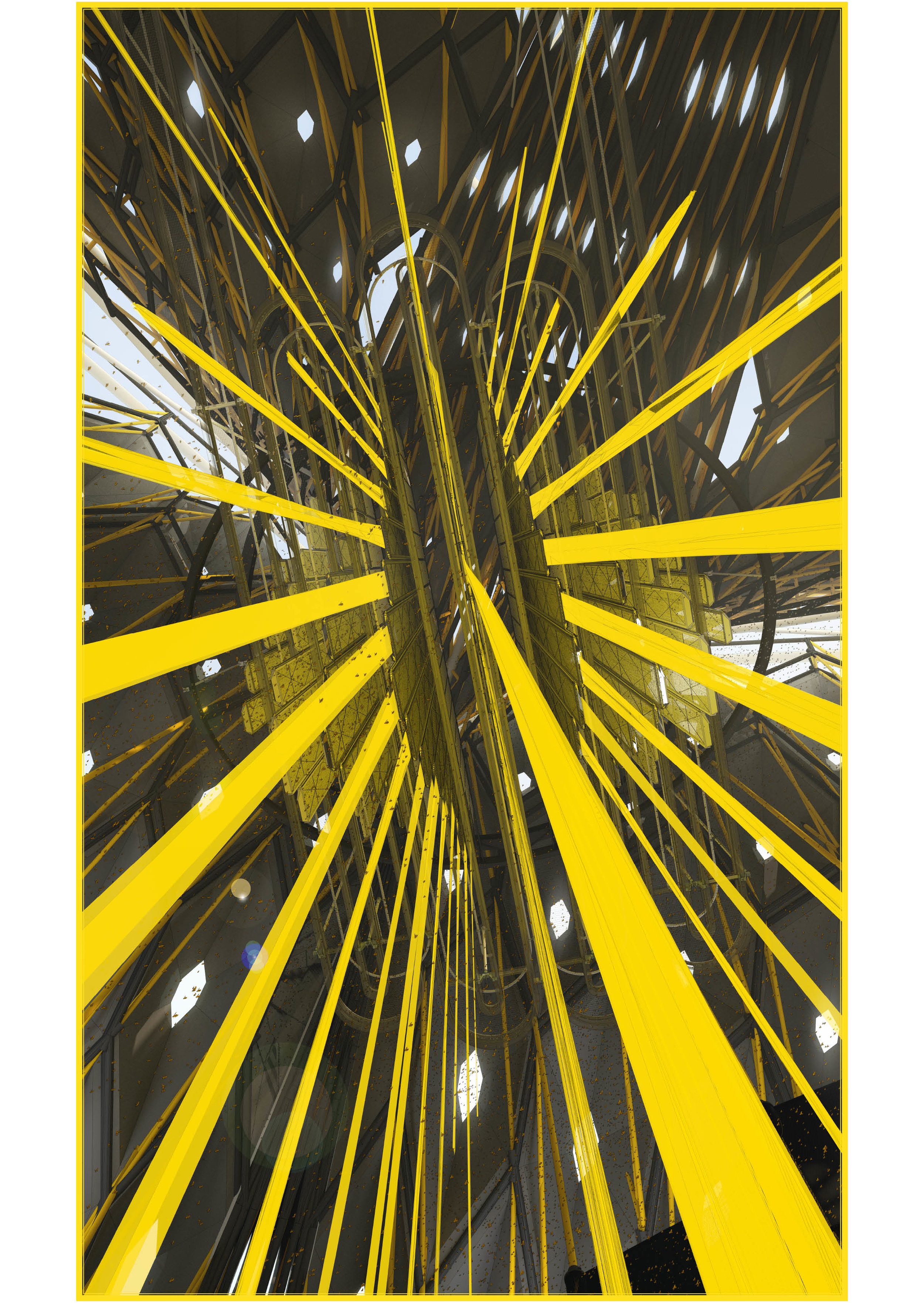
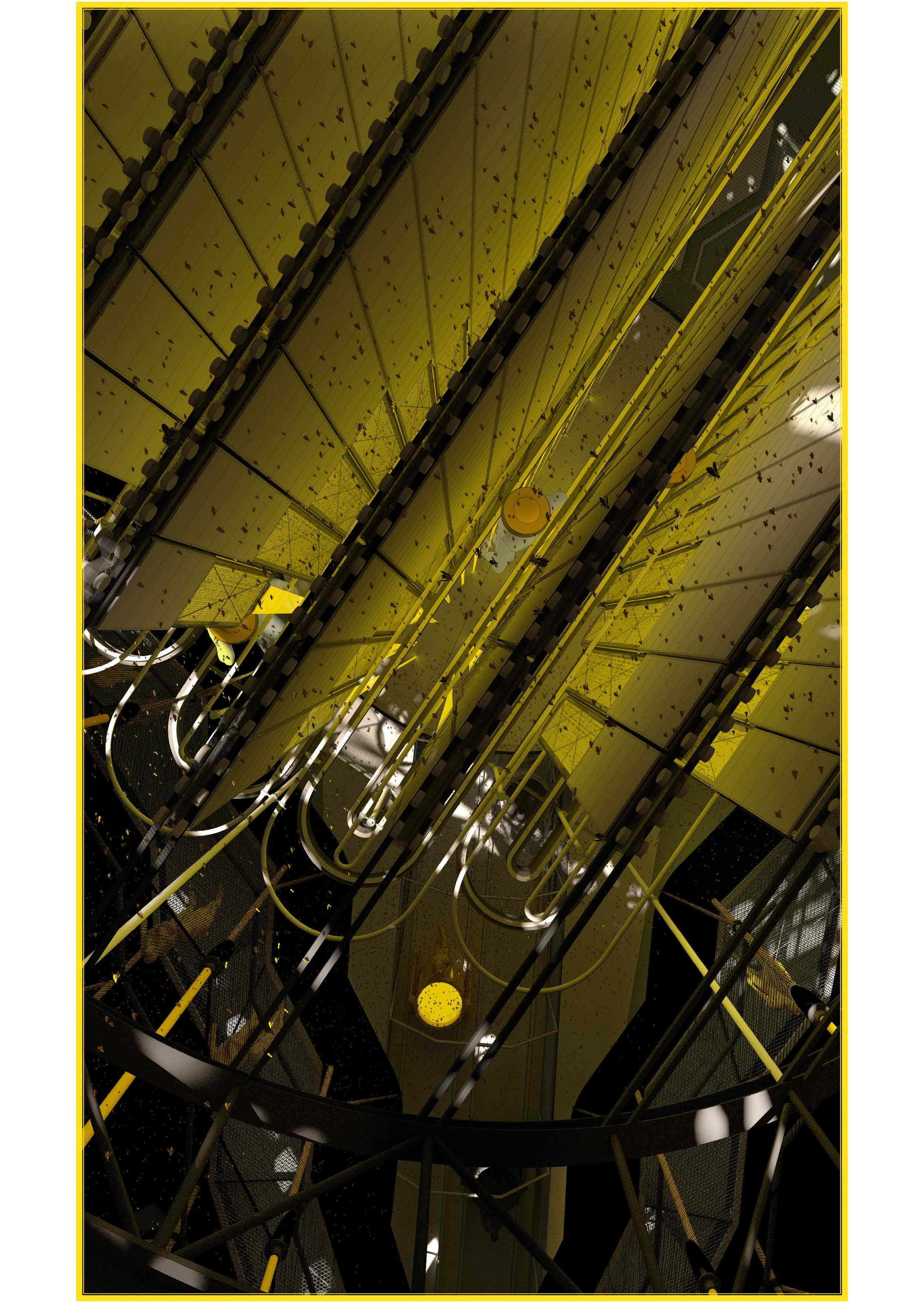
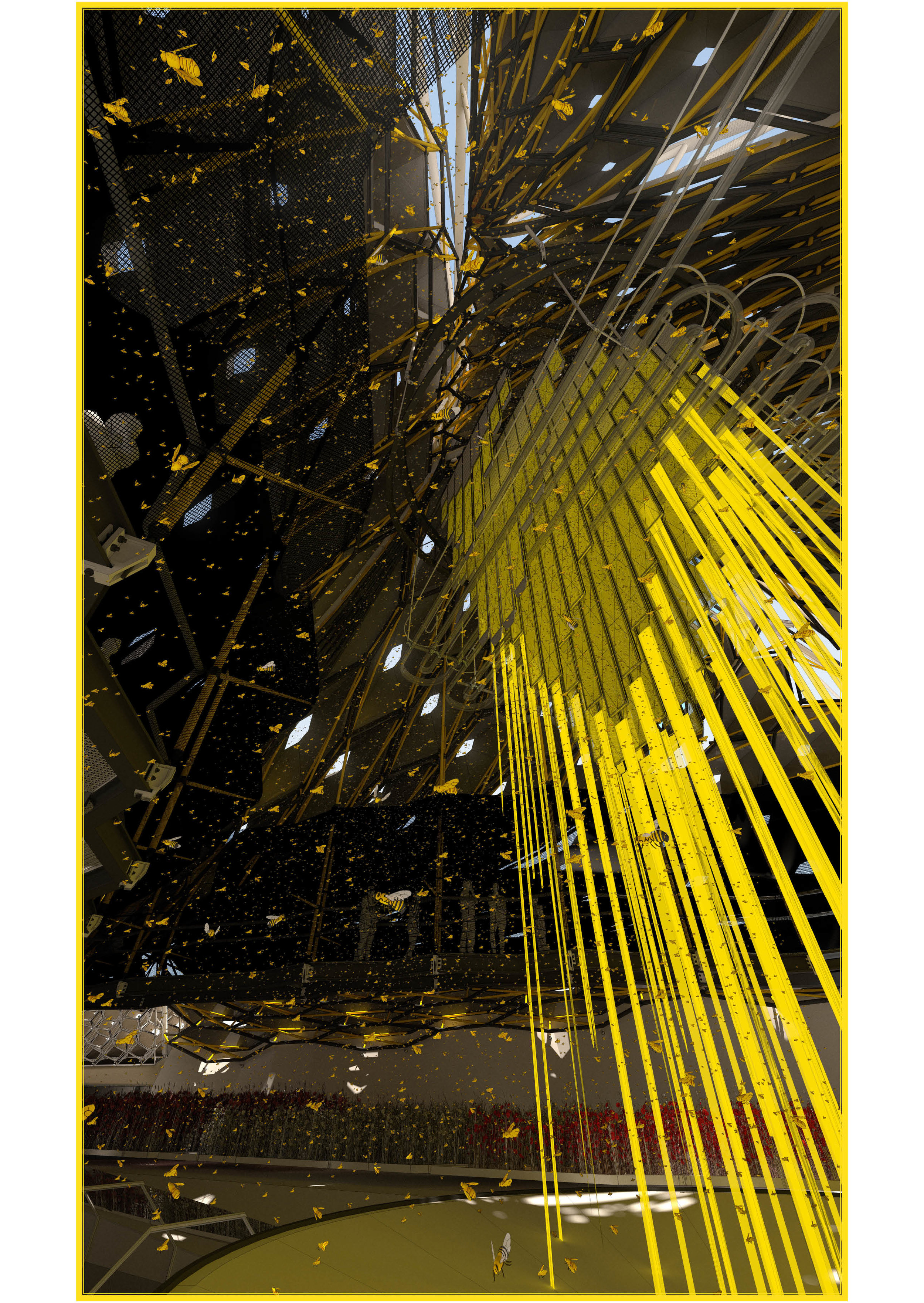
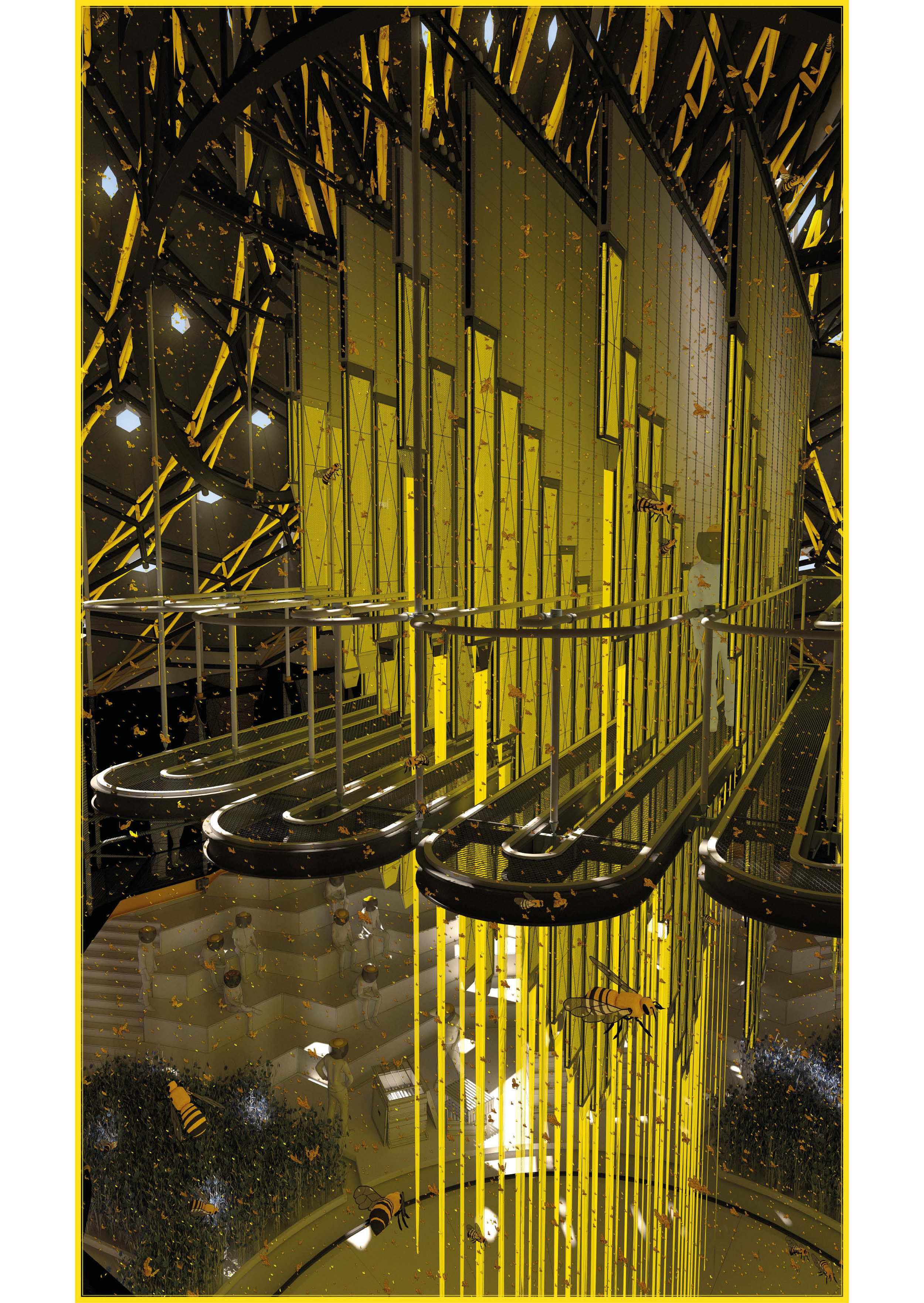
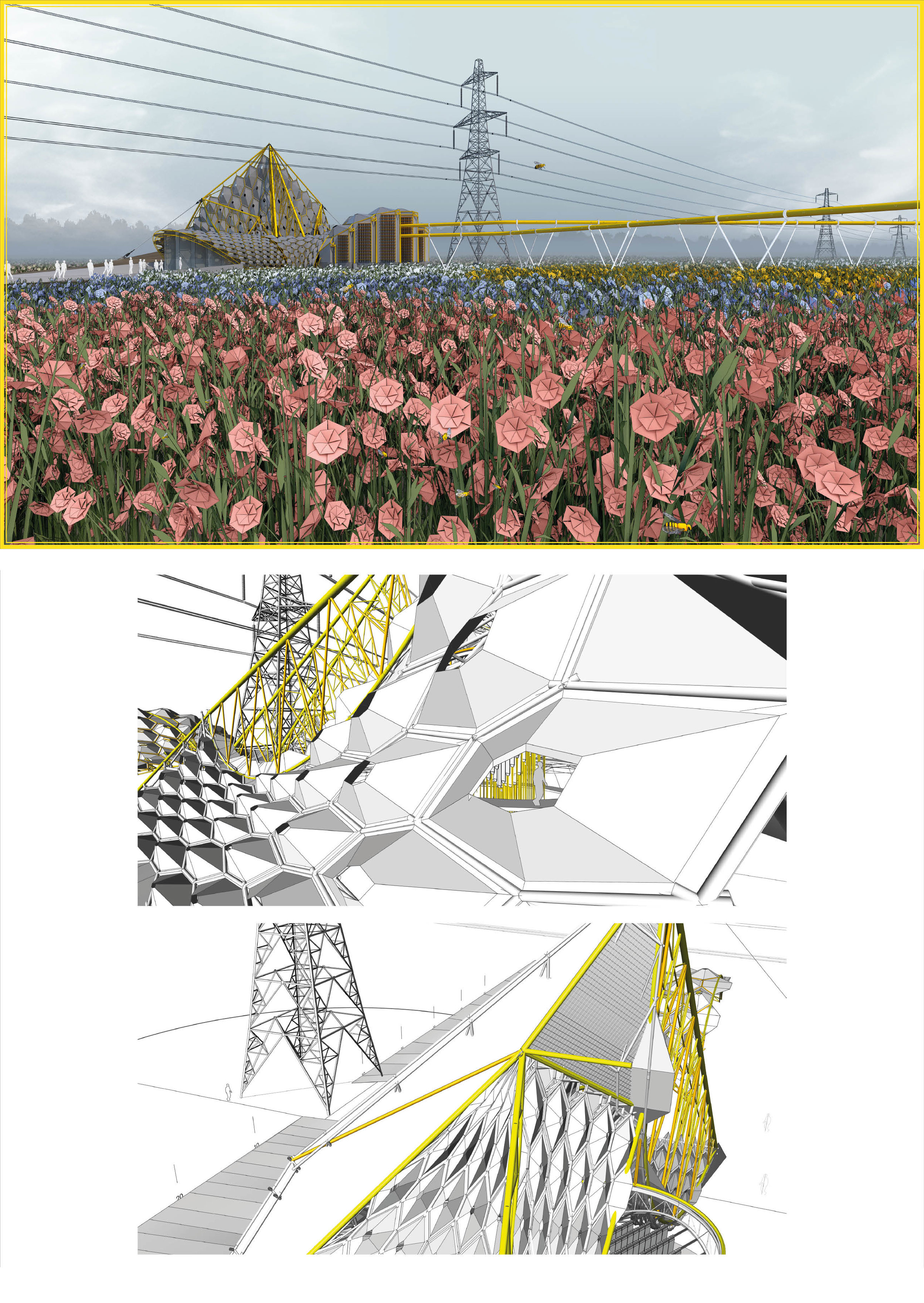
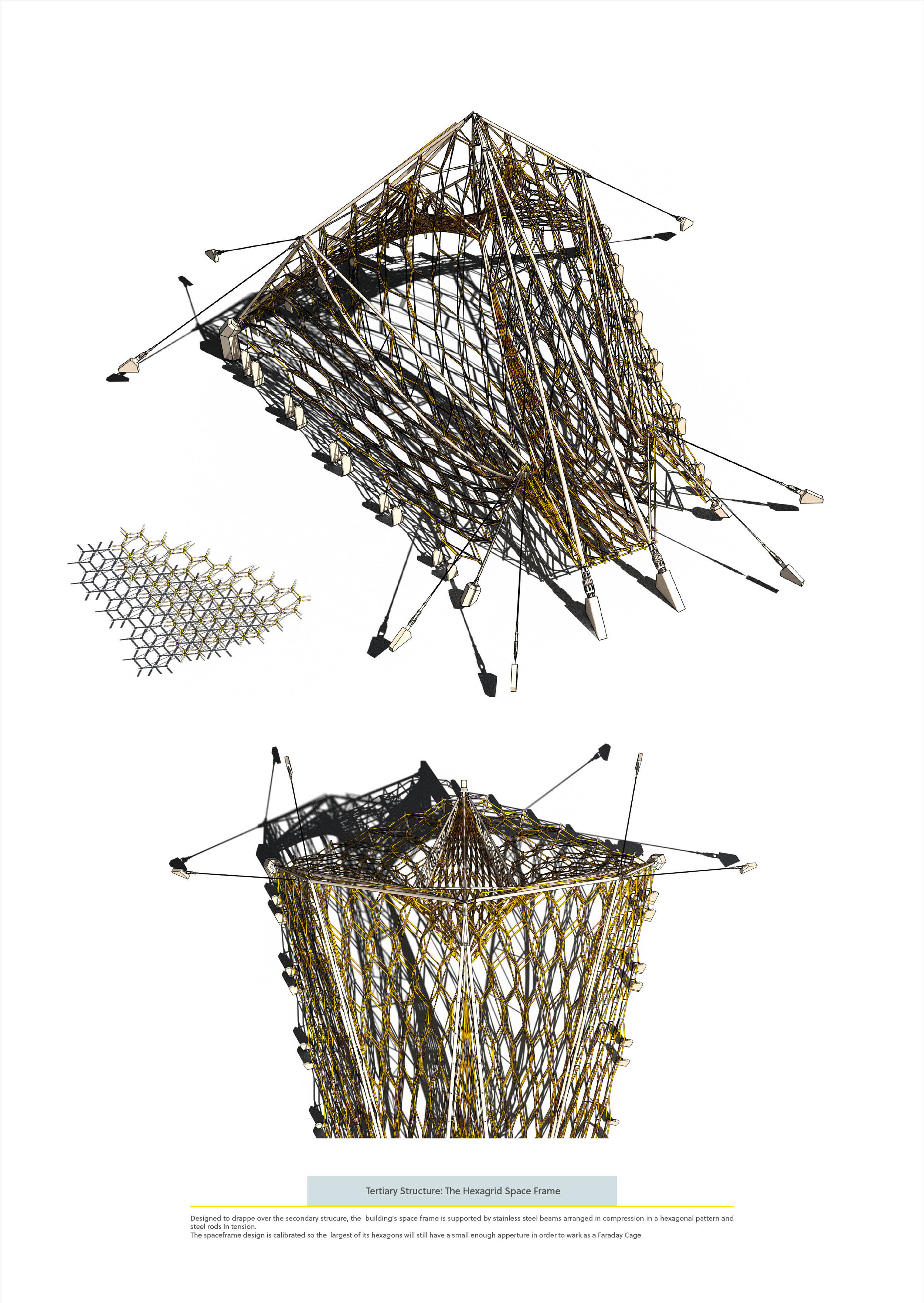

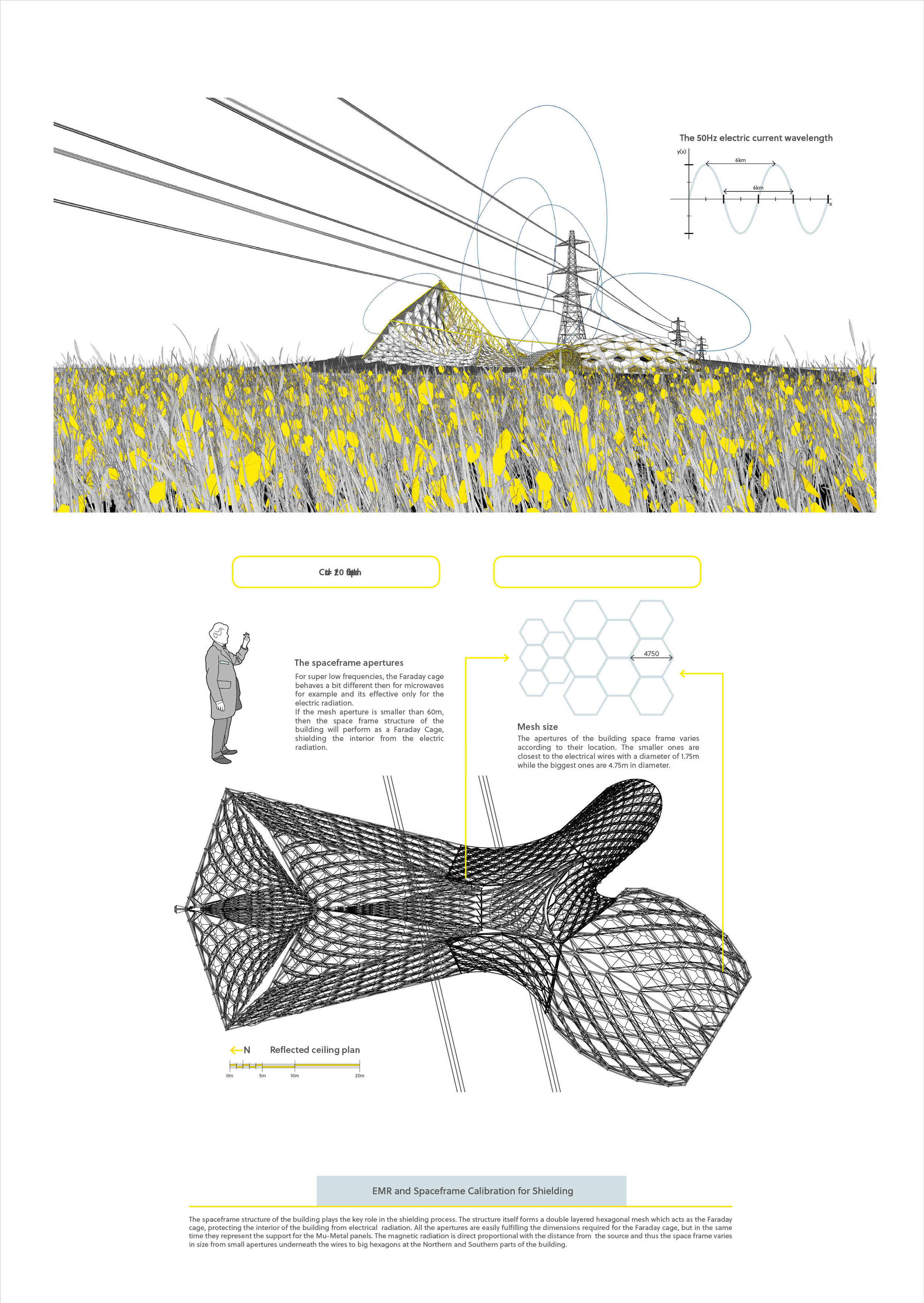
Stefan Florescu Y4
Apiculture Centre. The National Grid takes up to 1.2% of England’s territory and on the chosen site of the project, located North of Harlow, up to 7.8%. The electromagnetic radiation emitted by the overhead power lines and the increased risk of fire has so far prevented these spaces use for urban development.
‘Under the Grid’ creates a new building typology that could be built in this unique spatial environment. The proposed typology envisages a building that is shielded from electromagnetic radiation, is fireproof, soundproof and fulfils the building constraints stipulated in the Working near National Grid Transmission Equipment technical guide. After analysing different scenarios, the brief explores the most sensitive guide example, in order to prove the feasibility of the methodology. The building programme focuses on bees, which are the most sensitive life forms to electromagnetic radiation and proposes an Apiculture Centre. On an environmental level, the building has a positive impact on the local habitat of bees, connecting the two sides of the power lines through its bee highways.
The Apiculture Centre acts as a living museum, where the public can visit and observe the bees in their natural habitat and also as a honey factory and a bee research centre. The overwintering room houses the bees bespoke hive and flower fields, which sustain their activity in winter. The public meanders through this space on suspended walkways that give an unprecedented, up-close look over the bees and their activities.
